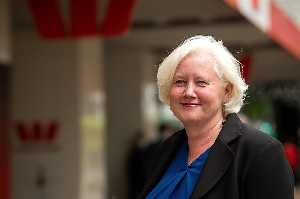
Although carded one- and two-year fixed mortgage rates are now about 200 basis points (bp) below last year’s high the vast majority of lower mortgage rates have yet to flow though.
BNZ figures show the average mortgage rate actually being paid in February was only 21bp below last year’s high of 6.39%.
By the bank’s estimates put the average paid mortgage rate closer to 5.6% in six months.
On $370 billion of housing debt, that is a positive cashflow of about $2.1 billion, equivalent to 0.5% of nominal GDP.
Meanwhile economists are united in their view trade tariffs will dent global economic growth and bring interest rates lower.
BNZ research head Stephen Toplis says the RBNZ’s 25bp OCR cut next month could stretch to 50 bp, given the global backdrop.
“The macro backdrop is clearly fluid, and the RBNZ’s assessment of the impact from the trade war skews towards a larger 50bp reduction.”
He says the odds of a global recession have risen and skew the risks around BNZ’s 2.75% terminal OCR forecast to the downside.
“Quite apart from the actual tariff increases, uncertainty from US economic policy is likely to constrain New Zealand consumer and business sentiment, which was already showing some weakness.”
Squirrel Mortgages chief executive has already said the response to the US trade war make it likely there will be a home loan rate of 4.5% this year some time.
“Quite apart from the actual tariff increases, uncertainty from US economic policy is likely to constrain New Zealand consumer and business sentiment, which was already showing some weakness.”
While stocks markets have reacted wildly to the tariffs and investors are ditching their shares for US government stock which has dropped, dragging the rest of the world down.
Wholesale interest rates have fallen and swap rates, which have the biggest bearing on New Zealand’s longer-term home loan rates, have dropped significantly – 20-25 bp.
If they stay at this lower level, it is likely to lead to lower home loan rates for borrowers.
Kiwibank's economists are predicting a further 100 bp cut in the OCR to 2.5% by the end of the year because of a “supply shock” from the US imposed tariffs. They believe the RBNZ may need to cut rates further than initially planned.
House prices and spending
BNZ’s chief economist Mike Jones says housing activity is stirring but not such much house prices.
“It is rising house prices that tend to generate the so-called ‘wealth effect’ that gets people in the mood to spend. For better or worse, the correlation between house prices and spending in NZ is tight,”
Stats NZ latest data show households’ net equity in housing edged lower over the second half of last year and is still some 14% below the $1.1 trillion December 2021 peak.
Not only are house prices yet to rise, but the shock value of big falls in council property valuations in some parts, like Wellington, may have even thrown the wealth effect into reverse, Jones says.
Should there be a bump in house prices over the second half of the year, as the BNZ expects, it will likely bring with it an extra dollop of spending activity.
Of course, there are no guarantees this will occur given the usual vagaries of house price forecasting, not to mention renewed uncertainty about the outlook generally, Jones says.




Comments
No comments yet.
Sign In to add your comment